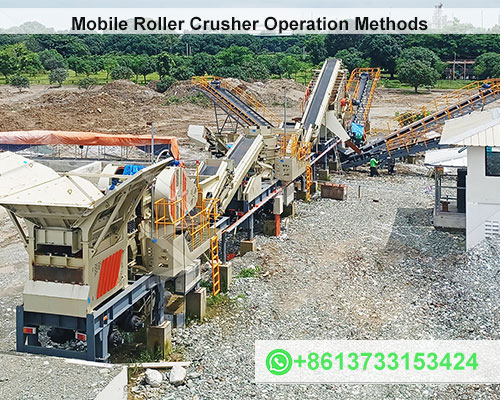Mobile Roller Crusher Operation Methods
Mobile roller crushers are versatile pieces of equipment used in various industries for crushing materials such as rocks, ores, and recycled materials. Their portability and efficiency make them valuable assets in construction, mining, and recycling operations. To operate a mobile roller crusher safely and effectively, it’s essential to understand the fundamental principles and procedures.

Understanding Mobile Roller Crushers
Before diving into operation methods, it’s crucial to grasp the basic components and working principle of a mobile roller crusher. Key components include:
- Feed hopper: Receives the material to be crushed.
- Rollers: The rotating elements that crush the material between them.
- Drive system: Powers the rollers.
- Discharge conveyor: Transports the crushed material.
The crushing process involves feeding the material into the hopper. As the rollers rotate, the material is drawn into the crushing zone and subjected to compressive forces, resulting in reduced particle size.
Operation Procedures
1. Pre-operation Inspection:
- Conduct a thorough inspection of the machine, including the rollers, hydraulic system, conveyor belts, and safety devices.
- Check for any signs of wear, damage, or loose components.
- Ensure adequate lubrication of all moving parts.
- Verify the functionality of safety features like emergency stops and alarms.
2. Equipment Setup:
- Choose a suitable location for the crusher, considering factors such as ground stability, accessibility, and proximity to material sources.
- Level the machine for optimal performance and safety.
- Connect the crusher to the power source according to the manufacturer’s instructions.
3. Material Feeding:
- Gradually introduce the material into the feed hopper to avoid overloading.
- Maintain a consistent feed rate to optimize crushing efficiency.
- Avoid feeding materials that exceed the crusher’s capacity or contain excessive moisture.
4. Crusher Adjustment:
- Adjust the gap between the rollers to achieve the desired particle size.
- Monitor the crusher’s performance and make adjustments as needed.
5. Safety Precautions:
- Wear appropriate personal protective equipment (PPE), including safety helmets, gloves, and safety glasses.
- Establish clear safety zones around the crusher to prevent unauthorized access.
- Train operators on emergency procedures and evacuation plans.
- Regularly inspect and maintain safety devices.
6. Maintenance and Cleaning:
- Adhere to the manufacturer’s recommended maintenance schedule.
- Clean the crusher regularly to prevent material buildup and ensure optimal performance.
- Lubricate moving parts as required.
Troubleshooting Common Issues
- Blockages: If the crusher becomes blocked, shut down the machine and clear the obstruction carefully.
- Overloading: Reduce the feed rate to prevent damage to the crusher.
- Uneven Wear: Monitor roller wear and replace worn-out components as needed.
- Hydraulic Problems: Address hydraulic system issues promptly to prevent equipment failure.
By following these guidelines and prioritizing safety, you can effectively operate a mobile roller crusher and maximize its productivity.








